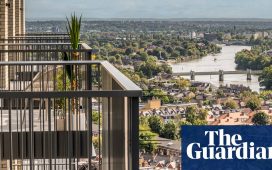Investors have pumped £2bn into converting unwanted London offices for new purposes as the shift to working from home reshapes the market.
They snapped up £1.3bn worth of central London offices with plans to convert them to new uses since the start of last year, according to real estate adviser CBRE. Another £700mn of deals are under way.
The deals cover 2.2mn sq ft and nearly 10 per cent of new investments as the property sector tries to adapt to the changing environment of hybrid working.
“It is a significant proportion of London investment volumes in today’s market,” said Ed Bradley, head of London office investment at CBRE.
He added that the scale of investment in “conversion of secondary offices to other uses is fairly unprecedented”.
Commercial real estate investment has slowed down sharply since last autumn but some investors are still banking on projects to switch offices to new uses such as student accommodation, hotels and laboratories.
“We have seen several examples of where alternative use investors and developers are outbidding traditional office investors by 10 to 20 per cent,” said Bradley.
Singaporean sovereign wealth fund GIC in September agreed to invest in the former Ted Baker headquarters near St Pancras station, known as the “Ugly Brown Building”. Plans for the site include laboratory space, given its location near major universities and hospitals.

Other properties, such as Nobel House on Millbank near the Houses of Parliament, are set to be converted into hotels and serviced apartments.
Demand for laboratories, hotels and student housing has been supported by the lack of space for research and the rebound in the numbers of international students and visitors after the pandemic.
The changes in the market also follow rising interest rates to curb inflation and a “mini” Budget last autumn that forced up borrowing costs further, unsettling investors.
Although top-end offices still command strong rents, demand for older and less desirable properties has fallen as companies cut back on space.
However, some surplus office buildings in the UK will be very difficult to convert, given physical design, planning rules and the money required, raising fears that they could become “stranded assets”.
Outdated offices often need large amounts of money for upgrades to make them attractive to tenants, or suitable for new uses, undermining their investment appeal.
Investment in central London offices was about half the long-term average in the first quarter of the year, although dealmaking levels had improved from 20-year lows recorded in the final quarter of 2022, according to CoStar data.
Hopes that unused offices could supply more homes have been hampered by planning constraints.
The government changed rules for office to residential conversions in 2021, tightening standards for light requirements and minimum unit sizes.
Many London local authorities further limit office conversions to protect their high streets and keep jobs in their areas, said Gary Sector, partner at law firm Addleshaw Goddard.
“Government policy is encouraging greater change of use to residential. But I think a lot of authorities are very keen to keep hold of employment generating uses in the borough,” he said.
“The 2021 changes were pretty significant. You can’t just convert any old office building into residential. It’s not that simple.”










